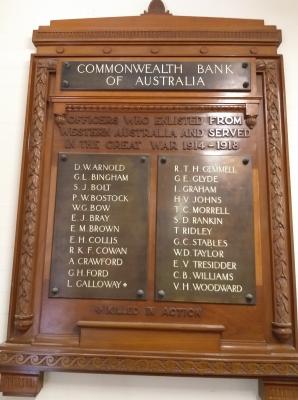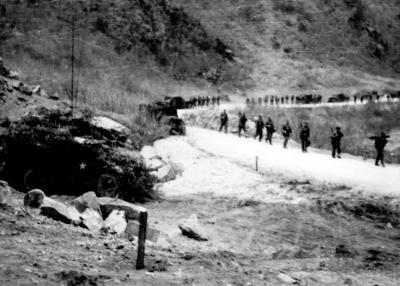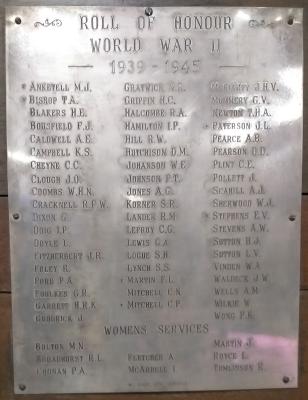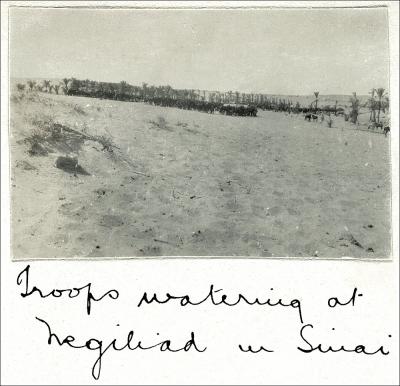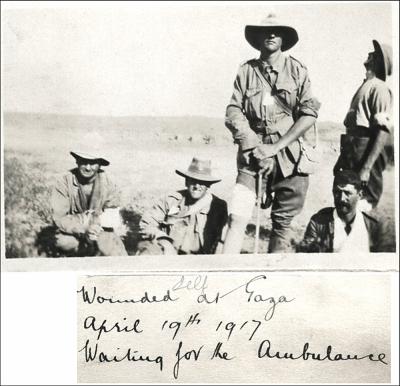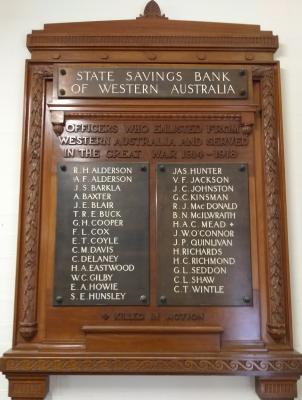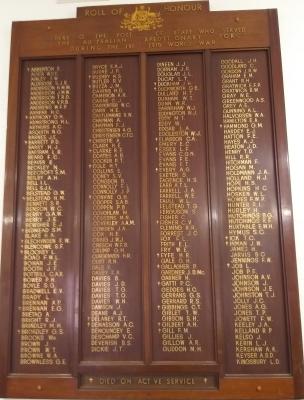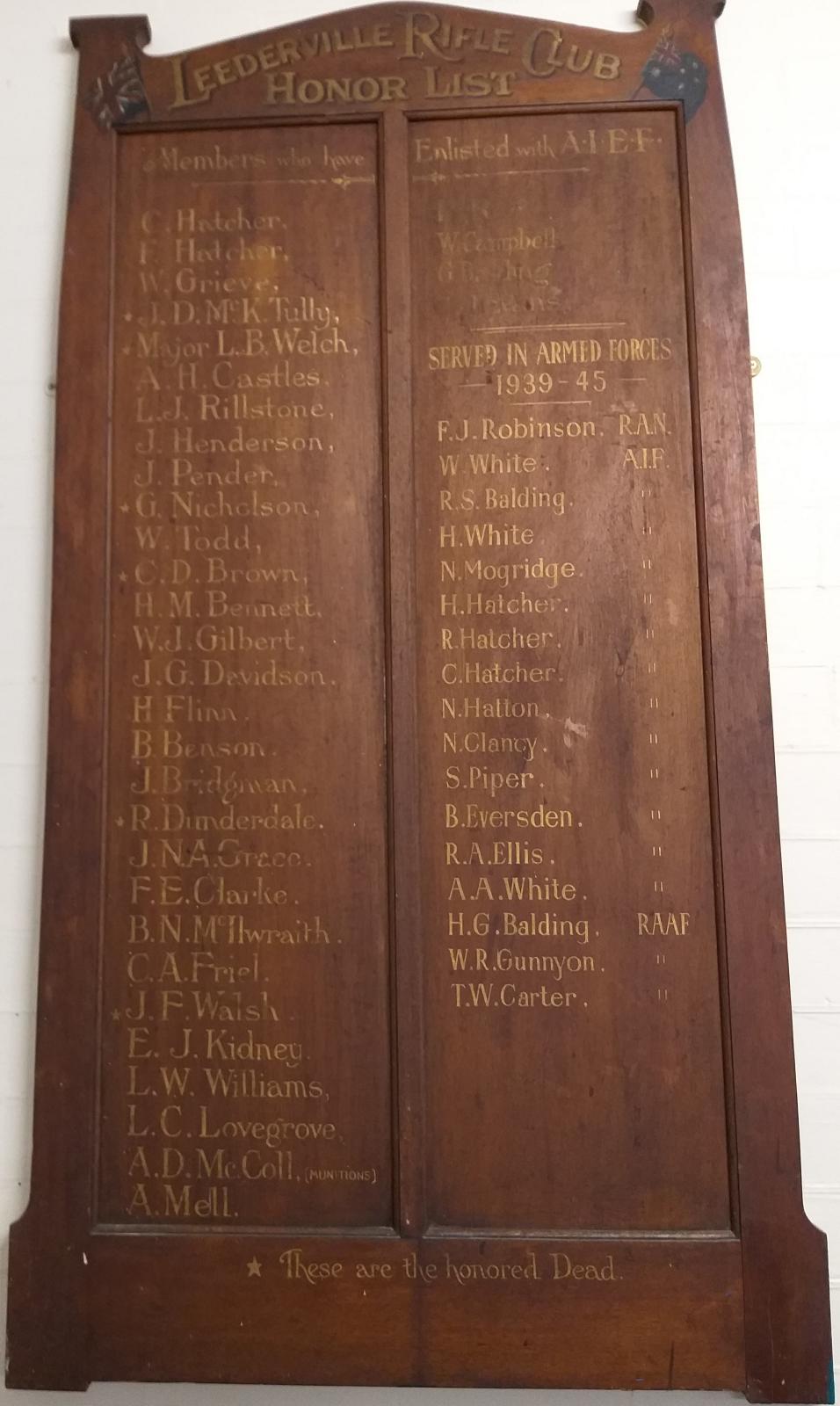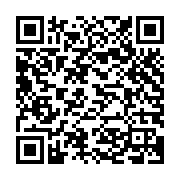Honour Board - Leederville Rifle Club (World War 1 / World War 2)
Twin portrait-oriented jarrah panels set in Art Deco structural frames with minimum ornamentation containing the names of the Leederville Rifle Club who served in the various armed services in World war 1 and World War 2.
Firearms were an integral part of Australian colonial and early Federation culture. Whether for military purposes, represented by British Imperial garrison regiments and, after 1870, by local Volunteers and then Militia, or for policing, for self-defence or game and bird sport, a great number of the adult population (and many juveniles) owned a firearm or knew someone who did. In the 19th and early 20th centuries, rifle shooting as sport was an ‘every man’s’ pastime, which most people could afford to enjoy. In many regards, however, rifle shooting became more than a sport. There was one major reason for this development and one major consequence. War scares in the 19thcentury, of which there were many, drove the development of a popular Volunteer military movement where musketry was a primary focus. This led to the development of rifle associationsfrom 1860, created to promote rifle shooting among Volunteers. Rifle shooting for defence purposes evolved, albeit somewhat differently in each colony, into a powerful and militarised rifle club movement by the time of Federation, accelerated by patriotic feelings during the Boer War.1 What became known as the ‘rifle club movement’ by the time of Federation in 1901 had already been a long time in gestation.
Details
Details
Australian Army Museum of Western Australia
Australian Army Museum of Western Australia
Other items from Australian Army Museum of Western Australia
- Honour Board - 2/2 Commando (World War 2)
- Honour Board - Commonwealth Bank (World War 1)
- Post 1945, North East Asia, Korea, 2 Royal Australian Regiment 1953-54
- Post 1945, North East Asia, Korea, 1953
- Honour Board - Commonwealth Bank (World War 2)
- Honour Board West Australia Trustee Executor and Agency Company Limited (World War 2)
- World War 1, South-West Asia, Sinai, Negiliad, 10 Light Horse, 1917
- World War 1, South-West Asia, Sinai, Gaza, 10 Light Horse, 1917
- Honour Board - West Australia Trustee Executor and Agency Company Limited (World War 1)
- Honour Board - State Savings Bank (World War 1)
- Post 1945, Honour Board - Korean Veterans
- Honour Boards - Post Office Staff (World War 1)

